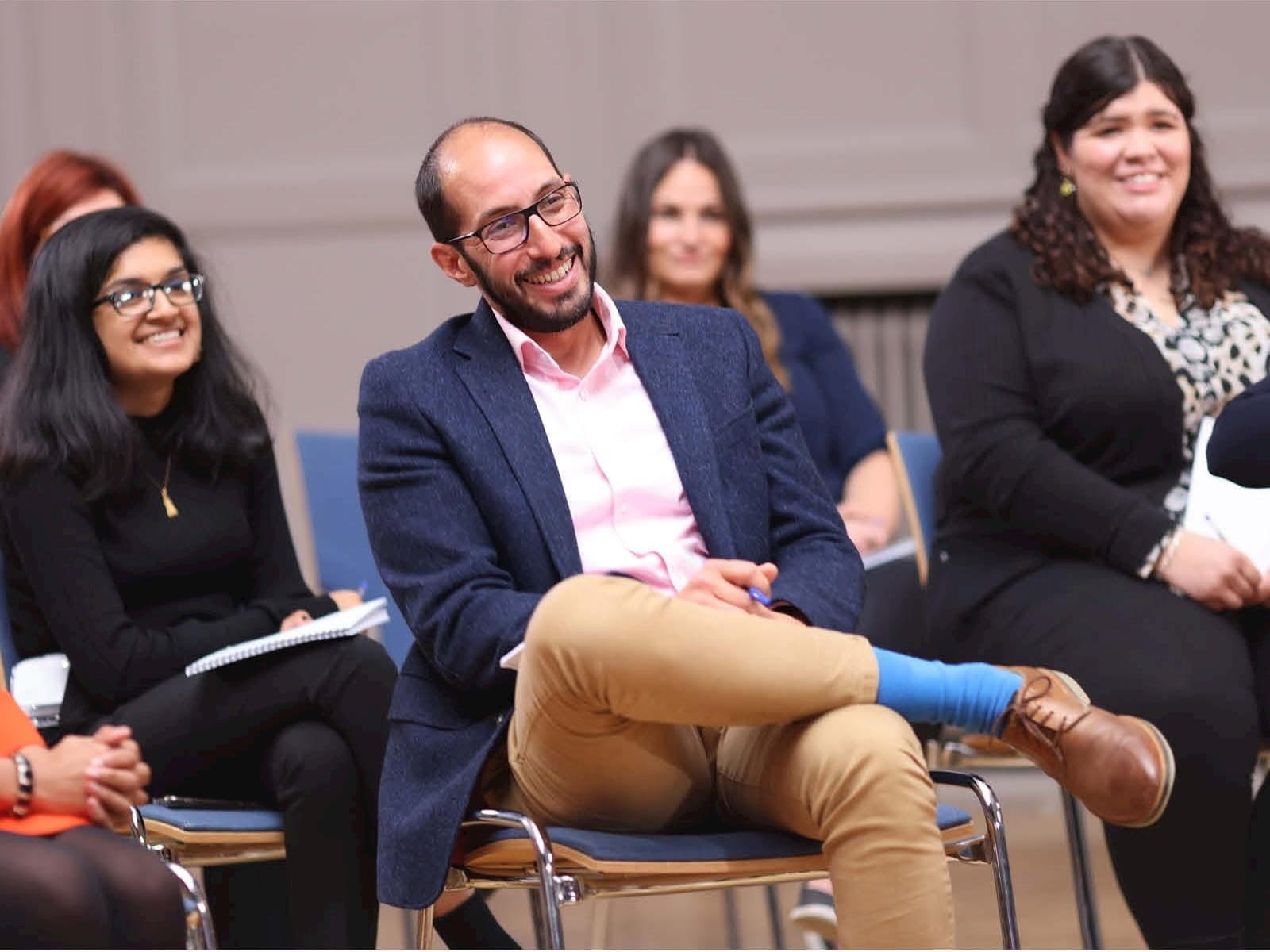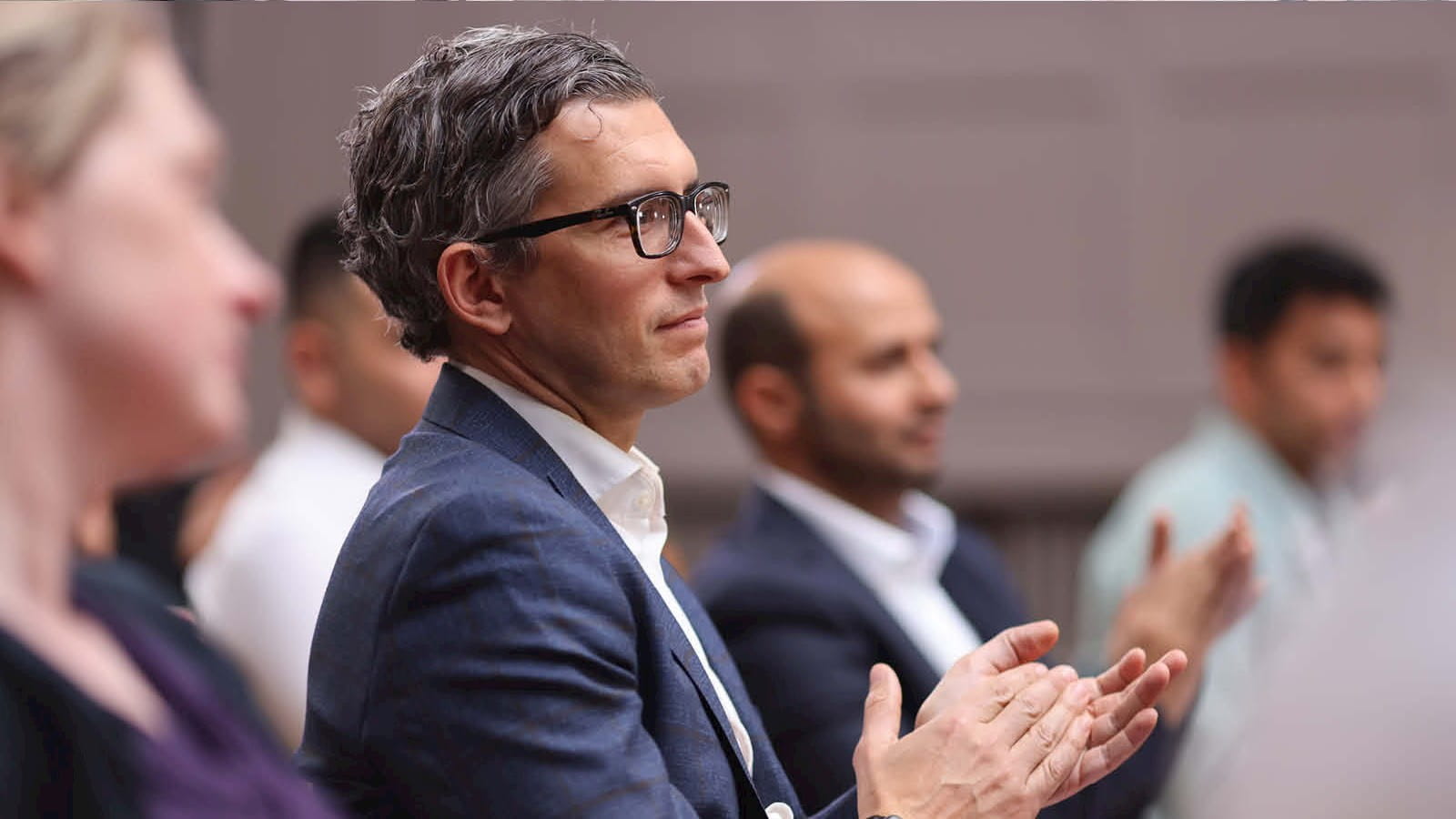Research shows that leaders have an exponential influence on an organisation’s ability to build inclusive cultures and work practices.
The more everyone in a diverse team feels included, the more empowered they feel to share their ideas. The more ideas shared, the more potential there is for innovative thinking to the benefit of the organisation, and the more innovation that considers and responds to the needs of people from under-represented groups.
“There is a recognition that we can't solve tomorrow’s problems and we can't stay relevant to our clients and to society, by sticking to the same traditional services, delivered by the same profile of people. We have to think differently and be more open,” says Nigel Moden, EMEIA Financial Services Banking and Capital Markets Leader at EY. “Diversity and inclusion is a clear focus in the banking industry and by embracing it, banks can more accurately reflect the customers and communities that they serve.”
Success, however, does depend on one group of people who can warp all efforts and send a diversity and inclusion (D&I) programme completely off-course: leaders.
“Leaders have an outsized effect on the whole organisation,” explains Juliet Bourke, Adjunct Professor and co-author of Deloitte’s Six Signature Traits of Inclusive Leadership. “When you’re a leader, you set the tone and influence how policies are interpreted and put into place.
“As a result, leaders impact a person's sense of fairness, respect, value, belonging and psychological safety. One study I conducted into the impact a leader has on an individual’s workplace experience measured it at 70% – with the impact rising the more an individual is different to others in the organisation. It’s a substantial effect that can be negative or positive. The more different you are, the more you need a leader that leans into the difference and supports you,” says Bourke.
The traits of inclusive leadership
The positive effects of supporting diverse members of an organisation is something Isabella Segal, a partner at Nyman Libson Paul, understands from first-hand experience. “Leaders really are vital to the process of creating work environments where people feel valued and safe to be their true self. I am a Trans woman; after I transitioned, I remember standing in the car park the first morning I came to work as a woman, feeling apprehensive. Eight years later, I still work at the same firm – it is a non-judgemental company that was, and remains, very supportive.
“I remember at a particularly difficult personal time for me, the senior partner of the firm I was working at took the time to visit me in person. What really helped was that he showed he cared and was interested in me. My journey would have been more difficult if my managers and work colleagues had not been so supportive.”
Diverse members of leadership teams help feed into inclusive leadership too. When there is more gender diversity at executive levels, companies are 21% more likely to have greater profitability, according to a study from McKinsey. Those companies with greater ethnic and cultural diversity on executive teams are 33% more likely than those without to have industry-leading profitability.
“As an ethnic minority senior leader, I’ve come to realise that there is a lot more to diversity and inclusion than I thought, and people need to be sensitive to that,” says Biyi Oloko, Director at international advisory firm Stephen Simeon. He points to the importance of diversity in thinking to produce a “well-rounded outcome”. “D&I should be a standing agenda item in partner-level executive meetings,” he adds. “Performance should be measured with an accountable and dedicated partner.”
Bourke adds that leaders must start with “commitment”. She distinguishes between a type of commitment that comes from a rational understanding of the business case for D&I, and a more fundamental commitment rooted in the leader’s values. “The leaders I talked to who went the extra mile and were prepared to keep leaning in, even when others were suggesting things had gone far enough, were doing it because it was really important to them – they had a strong values alignment.”
Alongside commitment, Bourke’s report on inclusive leadership identifies five additional traits: courage, cognisance of bias, curiosity, cultural intelligence and collaboration. “These signature traits work together. They cluster and amplify each other. Commitment gives you drive and motivation. Courage gives you humility and a learning mindset, while cognisance of bias helps you to navigate and identify the things you need to do. Curiosity gives you a sense of empathy and preparedness to hold things open a little longer, rather than close them down and default to what you have done before. Cultural intelligence is a specific form of these capabilities, and collaboration is doing this in teams,” Bourke explains.
Everyday actions that build inclusion
Although it’s important to understand the ideas behind inclusive leadership, it is leaders knowing how to turn those ideas into action that really ensures the success of a D&I strategy. “It’s about all the little things you say and do every day to demonstrate inclusivity,” explains EY’s Moden. “And I think ‘do’ is more important than ‘say’.”
For Moden, being a role model for inclusive behaviour revolves around understanding that creating a culture of inclusion does not happen by accident, it requires intentional action. He explains how four steps taken by EY help:
- Do as you say “Our global leadership is really effective at leading from the front on this topic and sets the tone from the top. But unless we follow through at every level and our actions meet our words, then the expectation created from the top of how things are going to look will lead to acute disappointment if and when things don’t turn out like that on the ground.”
- Create an inclusive meeting culture “I give a lot of thought to team make-up and how we work together. With the meetings that I chair or participate in, I am mindful to ensure senior voices don't dominate inappropriately, that everyone has had a fair opportunity and that their voice has been heard.”
- Ask how your team is doing “Check in with people, particularly when you have a hybrid work set-up. We have an ‘anchor day’ – a set day every week when you know your team is going to be around you. I try to make the most of that opportunity to make it feel like an inclusive day in the office, greeting everyone and asking how they are doing. You want to find a cadence and rhythm around checking in with your team, not only on a business level, but also on a personal level.”
- Make systemic change “There needs to be consideration of the organisation’s processes and systems – understanding how you embed [an inclusive] way of looking at things into your core processes – which requires you being very clear about what those core processes are. It’s key that in recruitment, retention and all of our core processes everything is done in a visibly inclusive and fair way.”
It’s not always clear in the workplace how to establish inclusive leadership. Training or other types of support are not always available, given how all organisations are still learning about these issues. All of which means achieving success often involves navigating stretches of uncertainty. “It is exciting and scary in equal measure,” Moden reflects.
“You are putting unexpected combinations of talent together and you don’t quite know the result. But I have seen enough evidence to know that when those combinations work, it's amazing and far better than you could ever imagine.”
My inclusive journey: Tom Ahmad

“Inclusive leadership is grounded in trust. For me that comes from respect, honesty and openness to diversity of thought and perspective. My leadership style is to be a pace-setter – I find that I naturally set and encourage movement towards goals. But I aim to be inclusive. I try to leverage the perspectives and IQ of the team when making decisions. Even though this can slow the decision-making process given the extra time needed for the views and perspectives of others to be canvassed, in my experience higher quality decisions are made, with stronger stakeholder buy-in.
“There are so many challenges for leaders in the modern workplace, but all challenges are untapped opportunities. The obvious one, I think, is the shift to flexible working, which our firm has embraced wholeheartedly. Our shift to this way of working has been a game changer in accommodating the individual and diverse needs of our team. Rather than trying to create a one-size-fits-all environment that individuals have to fit into (assuming they can easily travel there), we have turned things on their head. We ask ourselves: ‘how can we bring the working environment to each team member in a way that best fits their unique needs?’
“Building community can be a good way to foster inclusion – community and family is something that comes naturally to most of us. A good leader creates space for people to prioritise investing in relationships inside and outside the workplace. Some practical ways to do this include: creating a mentoring culture where colleagues are given the time to nurture and support one another’s development; finding ways to encourage connection, like team socials, exercise, walk and talks; championing positive behaviour by supporting colleagues who engage in the community; and helping colleagues prioritise and manage their diary, leaving them time to invest in themselves and those around them.
“To my mind, great leaders promote opportunities for those around them to move from being strangers to becoming a community. While a leader can help show the way, it takes a community of talent to move mountains.”


